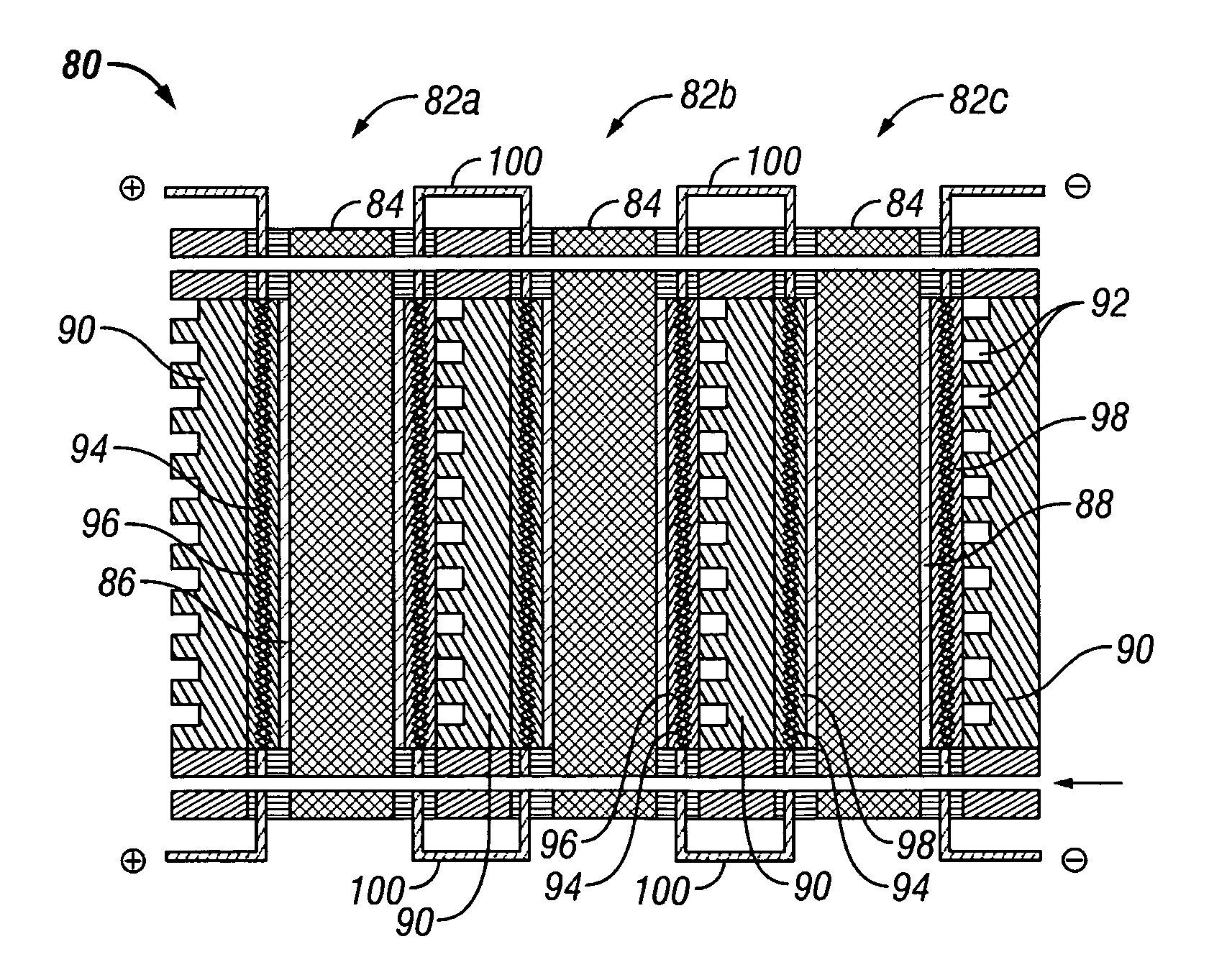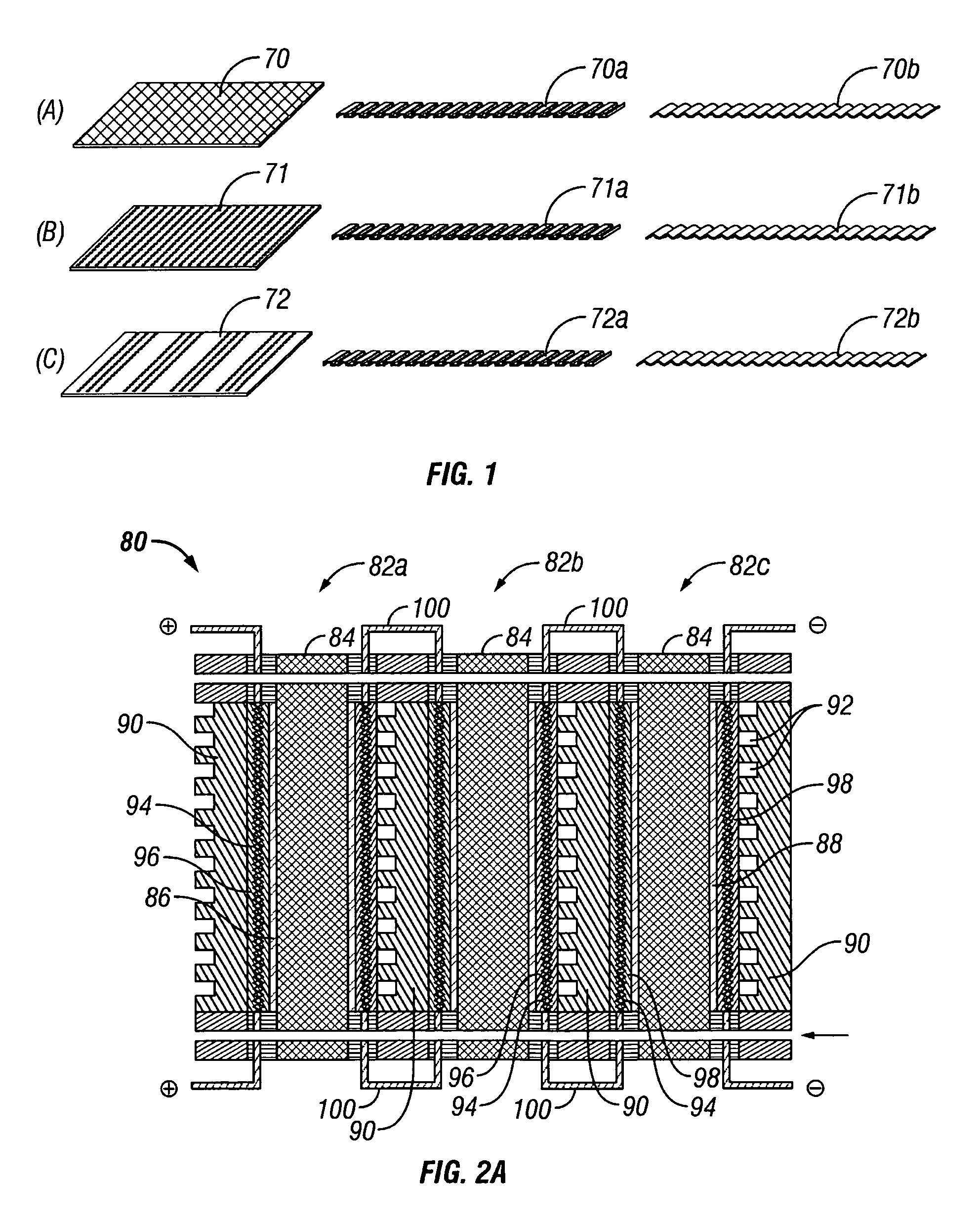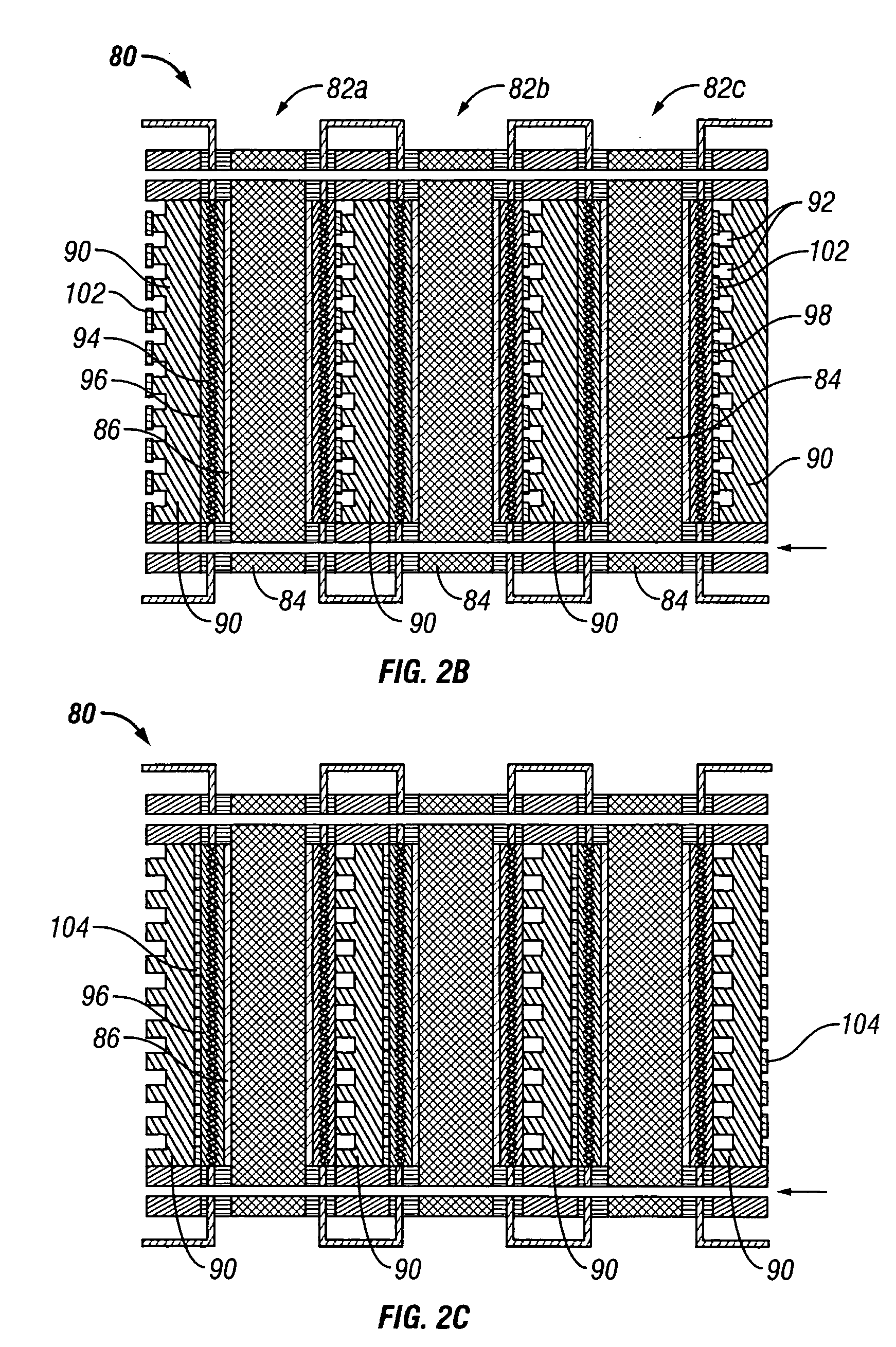Water management in bipolar electrochemical cell stacks
a technology of bipolar electrochemical cells and stacks, applied in the direction of cell components, electrochemical generators, cell component details, etc., can solve the problems of limited thickness of flexible organic polymer ion exchange membranes used as solid polymer electrolytes in electrochemical cells, and inability to meet the requirements of electrochemical cell use, etc., to achieve the effect of reducing the number of electrochemical cell stacks and reducing the number of a bipolar electrochemical cell stacks and electrochemical cell stacks of electrochemical cell stacks and electrochemical cell stacks and electrochemical cell stacks and electrochemical cell stacks and electrochemical cell stacks and electrochemical cell stacks and water management and water management, applied in the field of bipolar filter press-type electrochemical cell stacks, which is applied in the field of bipolar filtering and membrane drying effects, which can solve the problem of the electrochemical cell a bipolar electrochemical cell stacks and electrochemical cell stacks of electrochemical cell stacks and electrochemical cell stacks and electrochemical cell stacks and electrochemical cell stacks and electrochemical cell stacks and electrochemical cell
- Summary
- Abstract
- Description
- Claims
- Application Information
AI Technical Summary
Benefits of technology
Problems solved by technology
Method used
Image
Examples
Embodiment Construction
[0041] The present invention provides an electrochemical cell (or an electrochemical cell stack) supplied with a gaseous anodic reactant and either supplied with a gaseous cathodic reactant or producing a gaseous cathodic product. The cell avoids drying out at the anode electrocatalyst / ion exchange membrane interface, avoids flooding at the cathode electrocatalyst / ion exchange membrane interface, facilitates recovery of liquid water from the electrochemical cell at the anode compartment, and at the same time hinders the vaporization of water from the cathode. The electrochemical cell of the present invention is either a fuel cell or an electrochemical hydrogen gas concentrator where the fuel cell or the concentrator is supplied with a source of hydrogen gas as a reactant at the anode. In the case of the fuel cell, the gaseous oxidant is oxygen gas (or air), chlorine gas, or bromine gas. In the electrochemical hydrogen concentrator, the cathodic product is hydrogen gas. In the fuel c...
PUM
| Property | Measurement | Unit |
|---|---|---|
| thickness | aaaaa | aaaaa |
| thickness | aaaaa | aaaaa |
| pore size | aaaaa | aaaaa |
Abstract
Description
Claims
Application Information
 Login to View More
Login to View More - R&D
- Intellectual Property
- Life Sciences
- Materials
- Tech Scout
- Unparalleled Data Quality
- Higher Quality Content
- 60% Fewer Hallucinations
Browse by: Latest US Patents, China's latest patents, Technical Efficacy Thesaurus, Application Domain, Technology Topic, Popular Technical Reports.
© 2025 PatSnap. All rights reserved.Legal|Privacy policy|Modern Slavery Act Transparency Statement|Sitemap|About US| Contact US: help@patsnap.com



